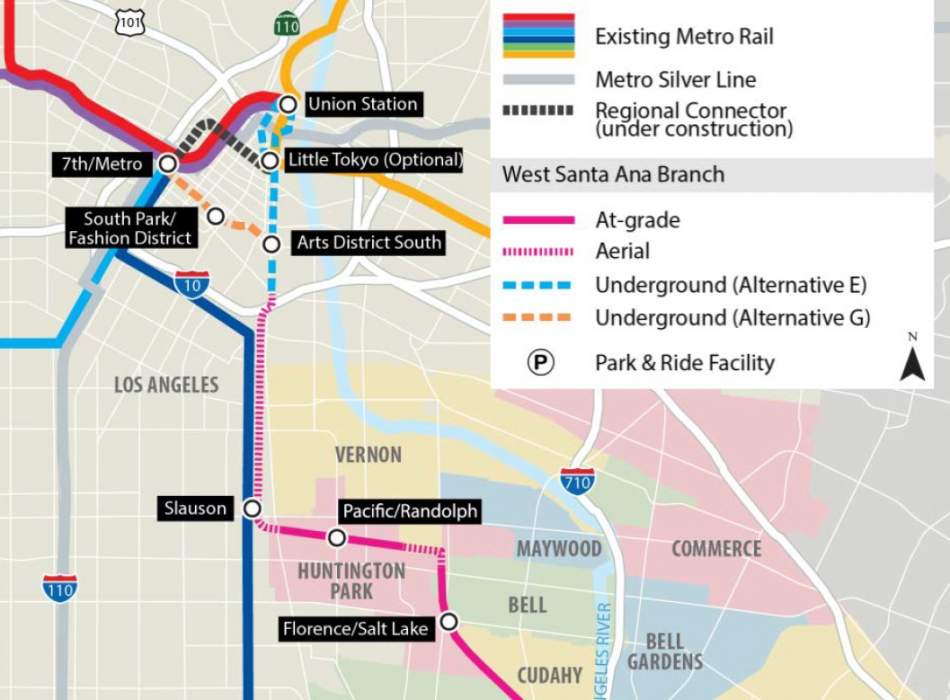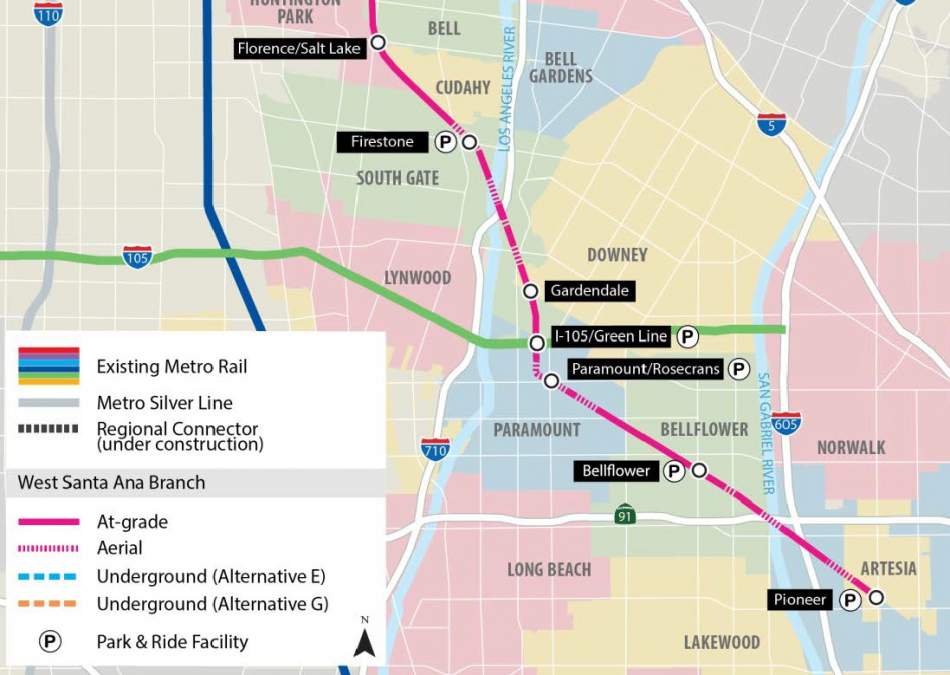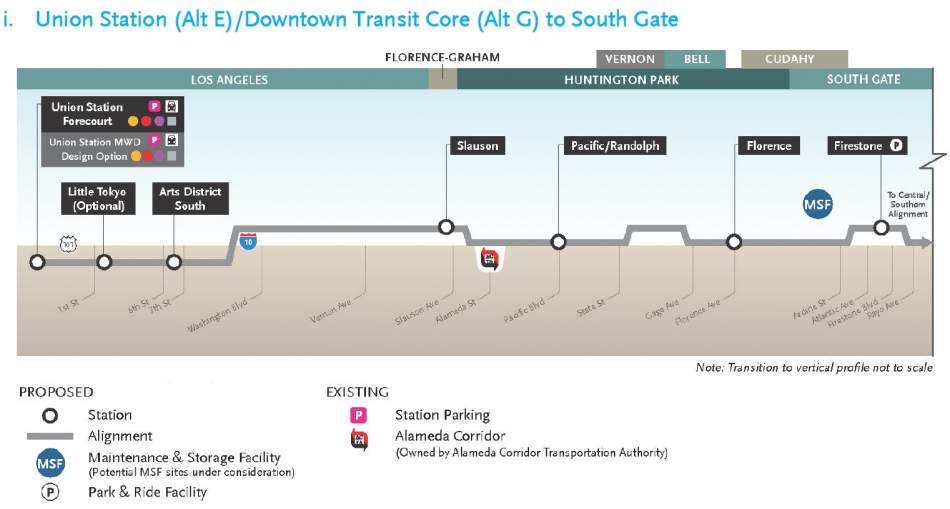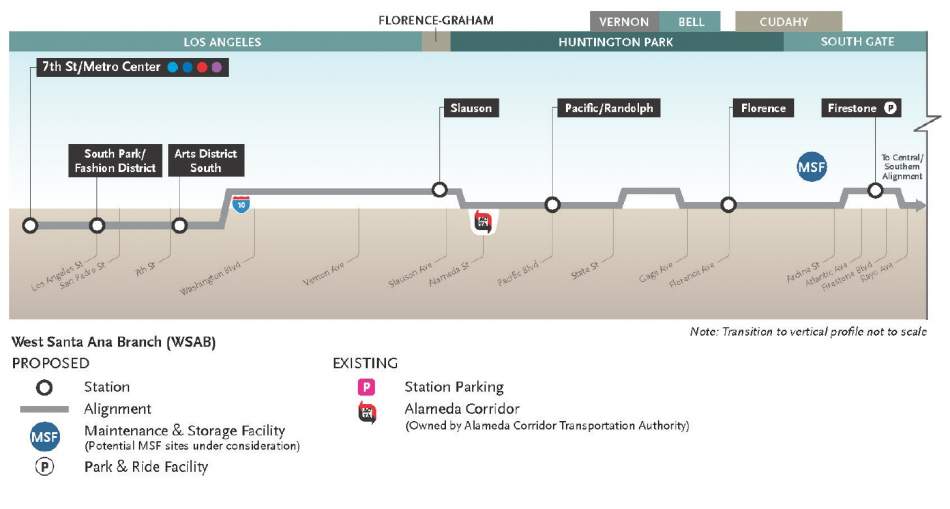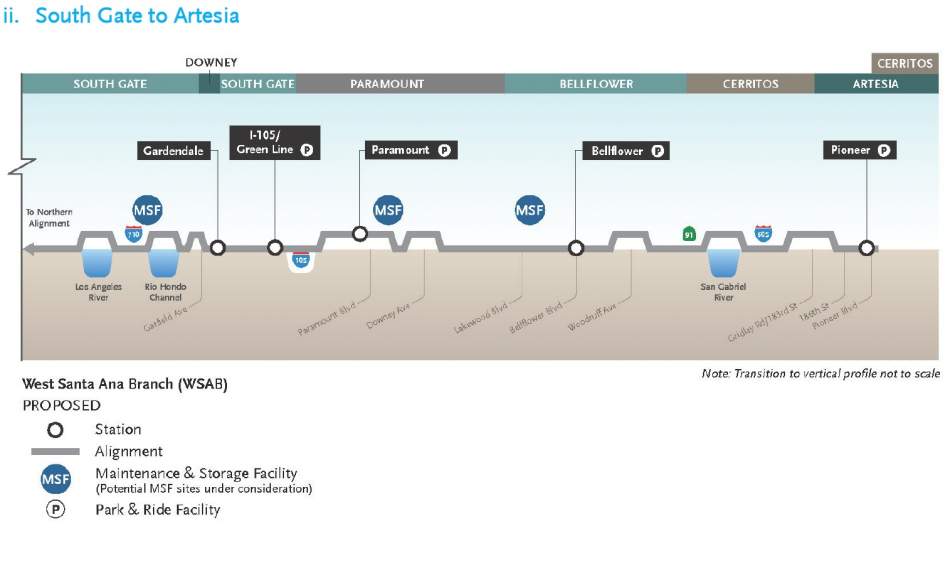Metro continues to refine its alternatives for a proposed light rail line linking Artesia with Downtown Los Angeles, based on new documents published by the transportation agency.
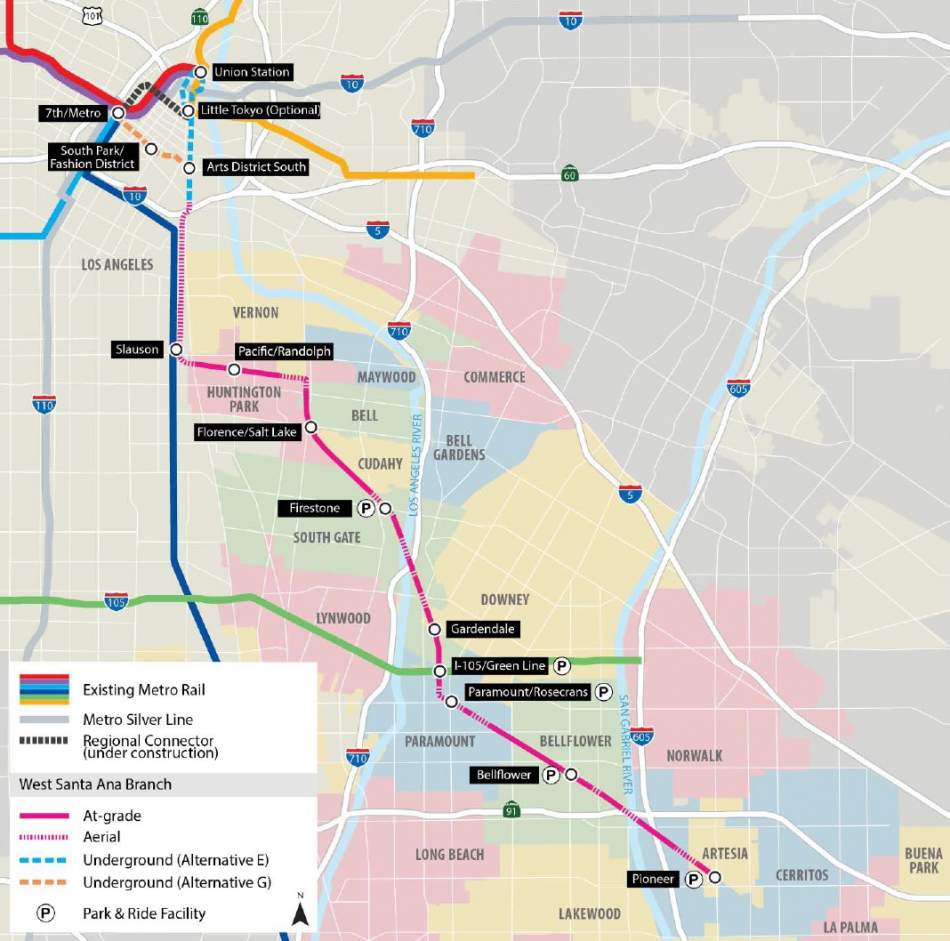
The West Santa Ana Branch (WSAB), which carries an estimated cost of $6.6 billion, would run 18 miles between Pioneer Boulevard in Artesia and either Union Station or the Downtown Financial District. Current plans call for completing the corridor in two phases between 2022 and 2041, though the WSAB has been identified as one one of 28 transportation projects which Metro hopes to complete on an accelerated timeline prior to the 2028 Summer Olympics. The agency has received an application for a public-private partnership which could facilitate that speedier schedule.
A staff report scheduled for review at this week's meeting of the Metro Board's Planning and Programming Committee recommends a refined project definition which would cut two alignment options from consideration, remove several proposed stations, and add new grade separations at key points along the corridor.
The recommended changes include:
- Removing Pershing Square as a potential northern terminus for WSAB. Analysis conducted by Metro found that of the two Financial District stations under consideration, 7th/Street Metro Center Station provides better connectivity to the regional transportation network. The proposed WSAB station box would be located at 8th and Flower Streets, a block south of the existing station.
- Moving the Union Station terminus further east of Alameda Street. This change would avoid impacts to the Alameda streetscape, which Metro is improving under a separate project.
- Moving the proposed Little Tokyo Station's southern portal to a DWP property at Alameda and 2nd Streets, improving pedestrian connectivity to the Arts District. A northern portal to the station would share a plaza with the 1st/Central station now under construction as part of the Regional Connector.
- An aerial crossing over the 10 Freeway. The original plan to cross below the freeway would have meant at-grade crossings near busy freeway on- and off-ramps in Downtown.
- Removing proposed stations at Washington Boulevard and Vernon Avenue. Travel Demand Forecasts indicate that most transfers between the Blue Line and WSAB would occur at Slauson Station, which would be the first northbound transfer point between the two lines. Fewer stations will allow for faster travel times on the WSAB.
- An aerial station and crossing at Firestone Boulevard. This avoids auto-vehicle conflicts on a busy street, and allows for a station placement that can be better integrated with South Gate's Gateway District Specific Plan.
- Aerial crossing at Garfield Avenue and Imperial Highway.
- Aerial crossing at Downey Avenue to avoid high-pedestrian intersections associated with Paramount High School and Harry Wirtz Elementary School.
- Relocated the I-105/Green Line Transfer Station north to provide better connectivity with a proposed park-and-ride lot and reduce impacts to single-family homes south of the 105 Freeway.
- Shifting Paramount STation closer to Paramount Boulevard to better connect with bus lines, local businesses, and a proposed park-and-ride lot.
- Aerial crossing at Flower Street/Woodruff Avenue due to "unique street configuration."
- Building Pioneer Station as a multi-modal transit hub and eliminating a potential extension to Bloomfield Avenue.
- Aerial crossing at 183rd Street and Gridley Road.
Staff also evaluated the possibility of building four-car platforms on the West Santa Ana Branch, which would allow for higher passenger capacity than the two- and three-car trains now used on Metro's other light rail lines. While four-car platforms were found to either meet or exceed Metro's needs for the corridor, staff recommended against building the West Santa Ana Branch with longer platforms, arguing that doing so would not be cost effective, could increase traffic impacts with longer crossing times, and may necessitate additional grade separation.
Instead, staff recommended initiating a "short-line" service with 2.5-minute headways for the 7th/Metro alternative. Metro currently runs peak-hour short-line service on the Blue Line, in which every other southbound train terminates at Willow Station rather than proceeding the full distance to Downtown Long Beach.
- West Santa Ana Branch Archive (Urbanize LA)





